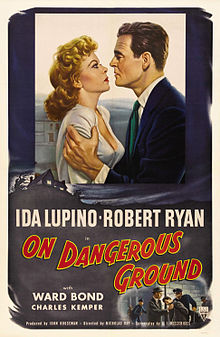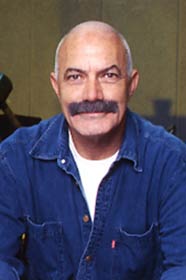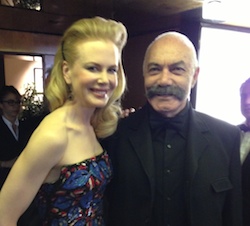A gripping, emotionally touching tale, Nicholas Ray’s On Dangerous Ground is considered to be an existential melodrama, which disqualifies it from the label of “pure” film noir because of its focus on the regenerative power of love and the fact that its closure suggests an upbeat ending.
Grade: B (***1/2* out of *****)
| On Dangerous Ground | |
|---|---|

Theatrical release poster
|
|
A. I. Bezzerides script, based on George’s Butler novel “Mad With Much Heart,” is divided into two distinct parts. The first is sort of a hard-boiled noir set in the city, the second a lyrical love story in the country, which, for some critics (not me) lessens the film’s overall impact and coherence.
Cornered, Danny flees in panic across the snow-covered terrain, where he accidentally falls from a cliff to his death. Wilson consoles Mary and then plans to head back to New York City and his job. However, realizing that there is nothing meaningful for him in the Big City, Wilson returns to Mary, determined to start together a new life.
Despite a contrived plot, the film is tautly directed by Nicholas Ray, who’s excellent in establishing a mood of despair in the first chapter and then redemption toward the conclusion.
Several critics–purists of film noir–have claimed that On Dangerous Ground is an incoherent film, because only the first half (with it urban setting) qualifies as noir, whereas the second half (set in the country) and its happy ending deviates from the genre’s conventions. The journey taken by Wilson is as much external and physical (from city to country) as it is moral and internal.
The score was composed by Bernard Herrmann, whose work is strongly evocative of his later, better-known score to Hitchcock‘s romantic thriller North by Northwest. He later reused a sequence that became the opening theme of the 1957 TV series Have Gun Will Travel, as well as other fragments of incidental music later adapted for use in the TV show.
Herrmann wanted to use an obscure baroque instrument, the viola d’amore, to symbolize Mary Malden’s isolation and loneliness. The sound of the instrument can be heard while she is on-screen.
On Dangerous Ground failed at the box-office (RKO claims to have lost $425,000) and Ray himself was not pleased with the final cut.
It would take another decade and another generation of prominent film critics, such as Andrew Sarris of the “Village Voice,” to reevaluate the film. At present, it is deemed to be one of Ray’s more subtle and lyrical films, bearing many of the director’s characteristic stylistic flourishes.
Cast
Ida Lupino as Mary Malden
Robert Ryan as Jim Wilson
Ward Bond as Walter Brent
Charles Kemper as Pop Daly
Anthony Ross as Pete Santos
Ed Begley as Capt. Brawley
Ian Wolfe as Sheriff Carrey
Sumner Williams as Danny Malden
Gus Schilling as Lucky
Frank Ferguson as Willows
Cleo Moore as Myrna Bowers
Olive Carey as Mrs. Brent
Credits:
Directed by Nicholas Ray; Ida Lupino (uncredited)
Screenplay by A. I. Bezzerides, Nicholas Ray, based on Mad with Much Heart, 1945 novel by Gerald Butler
Produced by John Houseman
Cinematography George E. Diskant
Edited by Roland Gross
Music by Bernard Herrmann
Distributed by RKO Pictures
Release date: December 17, 1951 (US)
Running time: 82 minutes



